The latest leap forward for HEEDS is the integration of cutting-edge artificial intelligence (AI) technology. This powerful marriage of AI and optimization aims to address the increasing complexity of engineering challenges, providing a more efficient and effective approach to design exploration.
How HEEDS AI Works
You can now find the Boost tab in Study properties to leverages advanced machine learning algorithms for long-running analysis in workflow. By harnessing the power of AI, HEEDS can strategically predict responses during the study instead of computationally expensive simulations, like Simcenter STAR-CCM+ simulations.
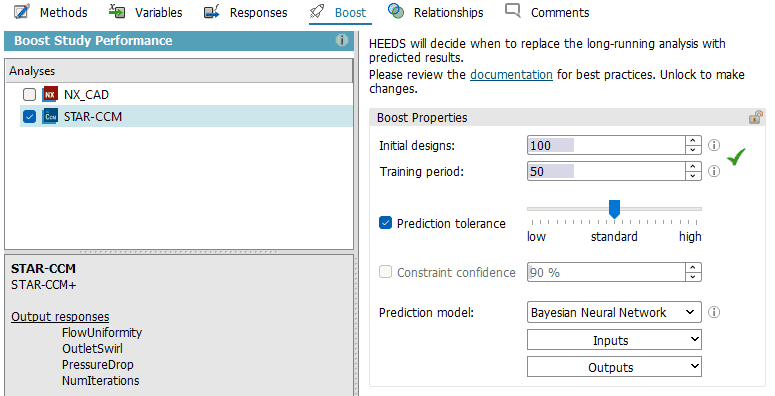
This offers two primary benefits. Firstly, it accelerates the completion of optimization studies within a given evaluation budget, while maintaining high design performance. Secondly, it enables a higher number of design evaluations within the same time-frame, raising extensive design space exploration and uncovering opportunities for discovering superior designs.
The AI seamlessly integrates simulations and fast AI-based predictions throughout the study, automatically identifying when predicted results can be utilized instead of simulation results. The Boost feature, specifically designed for SHERPA – Weighted sum of all objectives or SHERPA – Multiple objective tradeoff study.
User settings
Initial Designs:
- Determines the initial number of non-error designs required before training the AI model.
- Contributions from Share a design or Find a design contribute to this set.
- A minimum of 100 initial designs is recommended for all prediction models.
Training Period:
- Defines the number of designs between the first training and subsequent re-training of AI models.
- A minimum of 50 designs for the training period is recommended for all prediction models.
- Recommendations may be adjusted based on the expected training time compared to the time taken for expensive simulations.
Prediction Tolerance:
- Specifies the AI’s tolerance for choosing fast predictions over those from computationally expensive simulations.
- Higher settings reduce the time for optimization studies within a given budget.
- Lower settings result in a shorter time per design but may increase the overall number of simulated designs.
Constraint Confidence:
- Specifies the required confidence level for the AI to consider a design as infeasible.
- If a constraint is deemed infeasible, AI predicted responses are used instead of direct evaluation.
- Uncertainty in constraint feasibility near boundaries may lead to simulations being performed.
Prediction Model:
- Defines the type of AI model, input parameters, and output parameters for regression.
- Bayesian Neural Network: Offers a balanced trade-off between boosting performance and prediction accuracy for diverse engineering problems.
- Gradient Boosting: Ideal for faster training times and situations where small input changes yield significant output changes.
- Random Forest: Suited for problems with highly discrete characteristics.
How good is the boost?
To get a feeling for the new optimization boost, we test it on the Demo case of an under-hood pipe flow design. The purpose of this study is to improve the flow efficiency between the inlet and outlet side of the engine while minimizing outlet swirl, by varying 7 parameters. A Parameter Optimization with a multi-objective trade-off study between swirl and uniformity is performed, with maximum number of evaluations of 500.
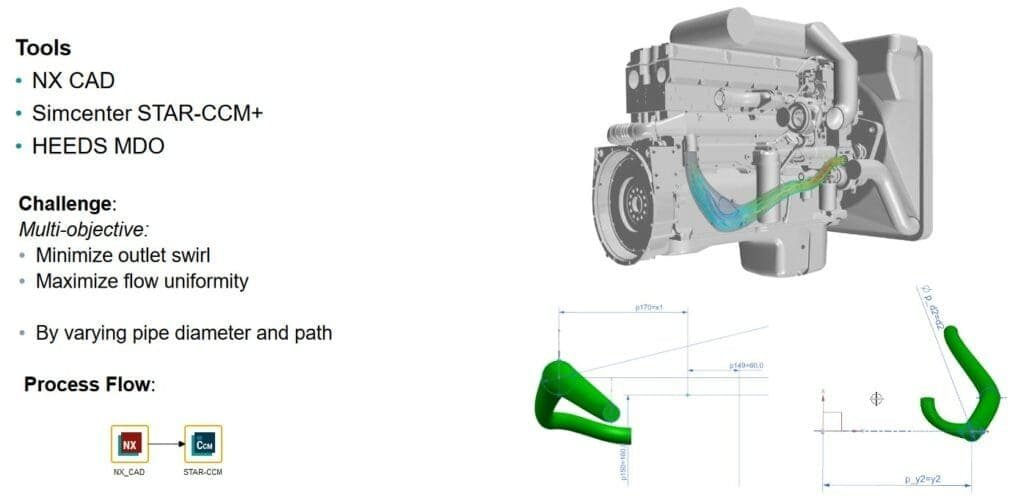
The boost was used with the default settings to predict the performance of the STAR-CCM+ evaluation. In total 193 designs are predicted (38.6%). The overall time for the optimization was 7:21 hours for boosted optimization, compared with 9:30 hours for the standard optimization. This is a speed-up of 22%.
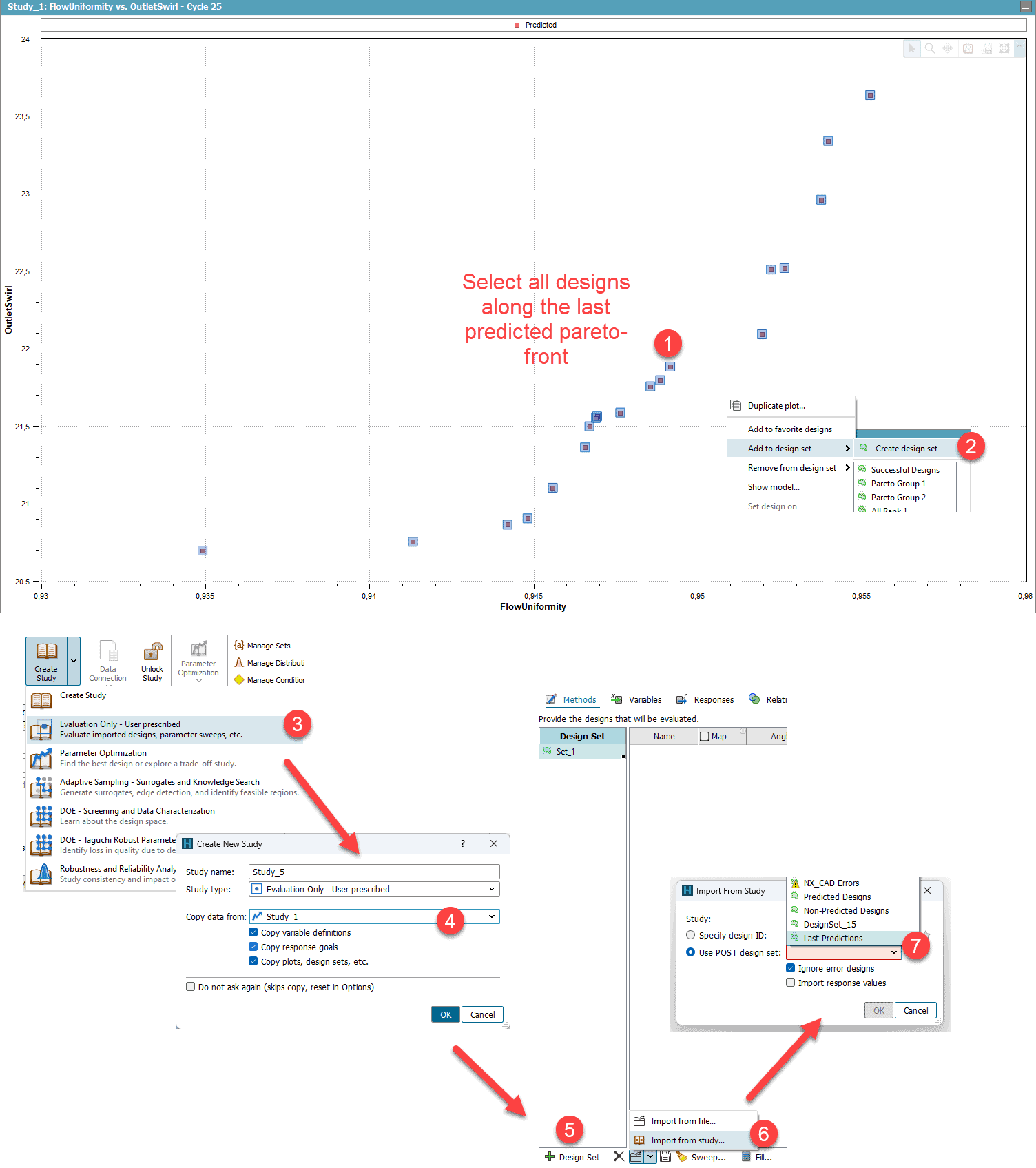
We re-evaluate the performance of the predicted designs in rank 1 of the last optimization cycle, to get an idea of how good the prediction is. This is done by creating a new Design Set (step 2) in the optimization study. Create a new Evaluation Only study (step 3 and 4) and specify a Design set for evaluation (step 5). Here you can import (step 6) recently created Design set (“Last Predictions”) from the optimization study (step 7). In total 19 designs are re-calculated with an averaged absolute error of 0.08% deviation for Flow Uniformity prediction and 0.88% deviation for Swirl prediction.
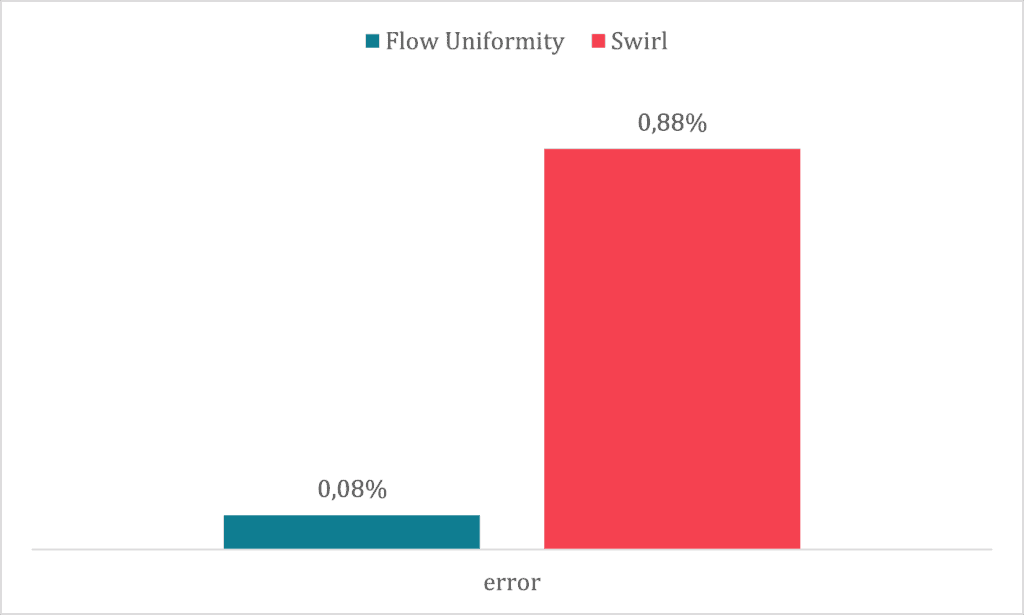
It is very interesting to see the development of the pareto-front in the video below. Showing that in none of the optimization cycles can predicted designs be found in the pareto front. This is a strong advantage of the AI method, since we expect the best trade-off to be as accurate as possible.
Comparing the pareto-front of both, the boosted and standard optimization in the plot below shows us that we get almost the same front. There is only a small region along the pareto-front where the standard optimization pushes the limit slightly further. It is likely that this relates to a weak distribution of variants in that region, compared to the standard optimization.

However, when we are looking at one of the typical variants from that cluster, we find that a re-circulation inside the pipe develops helping to straighten the outlet swirl yet increasing the pressure drop. The standard optimization creates 55 variants in this region, marked in yellow below, favouring a low value for parameter x1.


Design with otherwise similar parameters were created during the boosted optimization, but not with the same x1 value. This yields a better internal flow, with smaller pressure drop but similar objectives.


In the end both optimization studies found very similar variants along the pareto-front. But the boosted study significantly reduces the time required for optimization studies which becomes more important by even longer CFD analysis. Engineers can focus more on interpreting results and making informed decisions rather than spending excessive time on manual iterations.

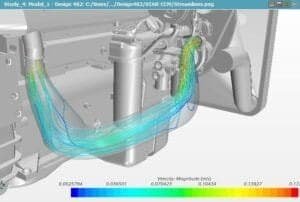
Conclusion
HEEDS’ incorporation of AI technology marks a significant milestone in the realm of optimization studies. But let´s be honest, year 2023 has been the year of AI. Earlier we would have called this type of assisted optimization probably something like, Surrogate-assisted Neighbourhood Assessment algorithm[1].
Anyhow, as industries continue to evolve and engineering challenges become increasingly intricate, the marriage of HEEDS and AI provides a powerful solution for engineers and designers striving to push the boundaries of innovation. HEEDS AI is prepared to revolutionize the way optimization studies are conducted, unlocking new possibilities for enhanced product performance and efficiency. If you like to know more, or in case you have any comments, please contact us at support@volupe.com.
[1] Vesting, Florian, Rickard Gustafsson, and Rickard E. Bensow. “Development and application of optimisation algorithms for propeller design.” Ship Technology Research 63.1 (2016): 50-69.
The Author
Florian Vesting, PhD
Contact: support@volupe.com
+46 768 51 23 46
